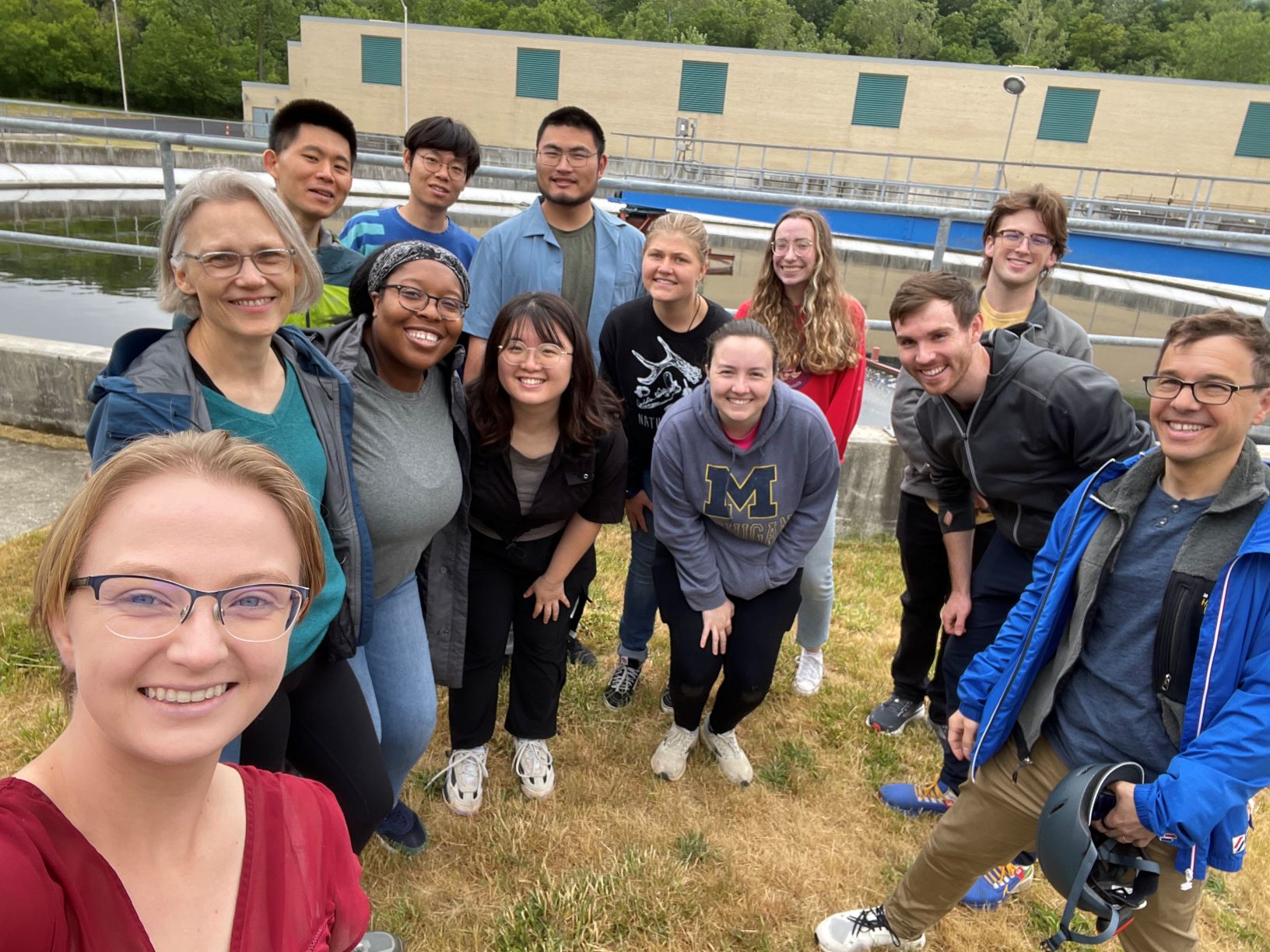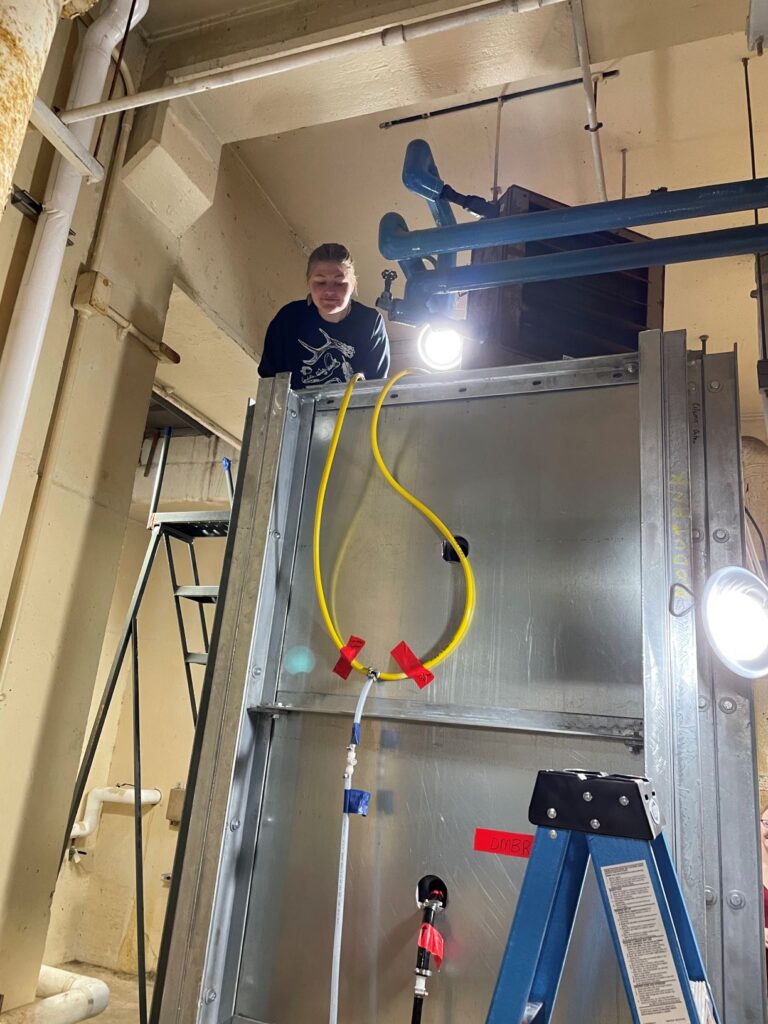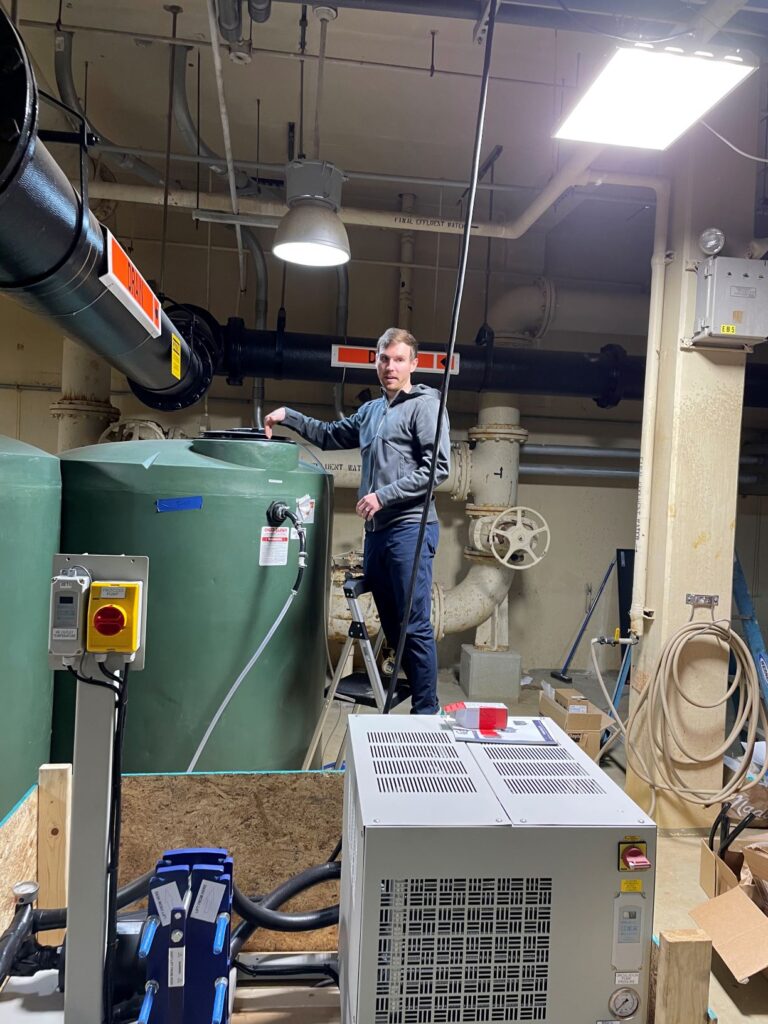
CEE Researchers Develop a New Process Train to Improve Wastewater Treatment
This project seeks to demonstrate the effectiveness of a novel biomembrane filtration process.

This project seeks to demonstrate the effectiveness of a novel biomembrane filtration process.
A team of researchers led by Steve Skerlos, Arthur F. Thurnau Professor of Mechanical Engineering and Civil & Environmental Engineering, and Lut Raskin, the Altarum/Erim Russell O’Neal Professor of Engineering and Vernon L. Snoeyink Distinguished University Professor of Environmental Engineering, is working on a project to demonstrate the effectiveness of a novel biomembrane filtration process to meet increasingly stringent wastewater treatment demands of U.S. water utilities.
Research Area Specialist Tim Fairley-Wax provided details about the process. “We will improve treatment performance while using at least 25% less energy at 25% lower cost than current approaches,” he said. “We will use a pilot system set up at the City of Ann Arbor wastewater treatment plant to demonstrate the feasibility of this technology as a simple, low-energy and retrofittable option for thousands of U.S. water utilities. Just this past month, we’ve moved all the equipment to the wastewater treatment plant and have done some preliminary testing there. We have yet to run the system continuously, but that’s expected to start up in the coming week.”

In addition to Fairley-Wax, Prof. Skerlos, and Prof. Raskin, the project team includes environmental engineering graduate students Alex Song, Kate Giammalvo and Yi Cao, and research assistant Mahek Siwatch, who recently graduated with her BSE in Chemical Engineering. The team started working on the project in October 2021.
Fairley-Wax discussed how membrane aerated biofilm reactors (MABR) enhance wastewater treatment. Typically, oxygen is bubbled into a large tank to enable microorganisms to grow and break down pollutants, but this method often results in much of the air escaping. MABR offers a solution by supplying air directly to biofilms of microorganisms on membranes. This technique significantly improves oxygen transfer, resulting in an overall more efficient process.

Fairley-Wax also explained the function of a recirculating dynamic membrane bioreactor (R-DMBR), a patented system created at the University of Michigan. This technology leverages microorganisms in wastewater to degrade pollutants at a fast pace, allowing for a more compact design compared to traditional systems. R-DMBR additionally filters out solids from the wastewater. Importantly, both MABR and R-DMBR technologies can be integrated into existing tank infrastructure, allowing water utilities to augment their treatment capacity without the substantial costs of constructing new tanks.
Operation at the Ann Arbor wastewater treatment plant is expected to last for about a year. The team will be evaluating the performance of the system by collecting real-time sensor data, and will monitor emissions of the greenhouse gas nitrous oxide, which is produced as a byproduct of nitrogen removal from wastewater.

The long-term goal of the research is to demonstrate that this process can perform carbon and nitrogen removal at a high rate with real municipal wastewater, but also with low energy input and a low greenhouse gas emission footprint. “By treating Ann Arbor’s municipal wastewater, we will be able to evaluate if the process can be applicable for municipal wastewater plants across the United States,” Fairley-Wax said.
With over 15,000 municipal wastewater plants across the nation, many are facing the challenge of needing to enhance their nitrogen removal capacity. Yet, the prospect of significant costs to construct more tanks, or a lack of available land for expansion, often act as hurdles. As Fairley-Wax highlighted, “Our project is dedicated to implementing the technologies we’re currently testing to these very plants. The goal is to empower them to meet their imminent nitrogen-removal requirements without the need for expensive or land-intensive expansions. By retrofitting our tested technologies, we’re striving to build a more sustainable and effective future for wastewater treatment.”

Marketing Communications Specialist
Department of Civil and Environmental Engineering